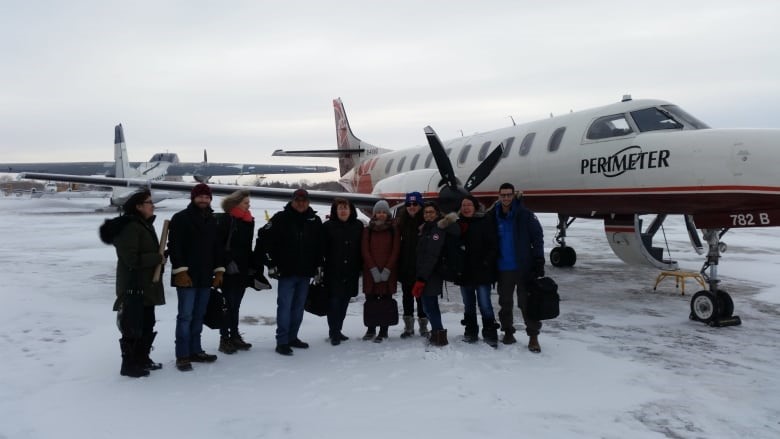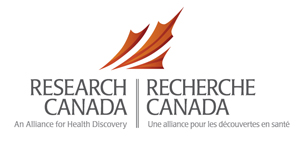 A team including doctors, nurses, a dietician and First Nations co-ordinators sits restlessly in the lobby of a Winnipeg airport, ready to board a nine-seater King Air for the 90-minute flight to St. Theresa Point, an Oji-Cree community only reachable by air.
A team including doctors, nurses, a dietician and First Nations co-ordinators sits restlessly in the lobby of a Winnipeg airport, ready to board a nine-seater King Air for the 90-minute flight to St. Theresa Point, an Oji-Cree community only reachable by air.
Among the team is Dr. Julia Uhanova, associate professor in the section of hepatology at the University of Manitoba’s Rady Faculty of Health Sciences and lead researcher of the Ookwin (Oji-Cree for “liver”) Study — a joint venture between the hepatology department at the University of Manitoba, Four Arrows Regional Health Authority (which represents the four Island Lake communities) and a clinic in Winkler, Man.
The study is looking at the prevalence and incidence of non-alcoholic fatty liver disease, or NAFLD — a condition in which fat builds up in the livers of people who drink little to no alcohol. Left untreated, it can lead to liver disease, cancer, stroke, cirrhosis (scarring) or hepatitis. Some people might even need a liver transplant.
More people are getting it than ever before — “not only here, globally,” said Uhanova, who says up to 30 per cent of Canadians are affected.
“We see much more NAFLD in the Indigenous communities than we would like to, so that is a big problem,” she added.
“If you have one-third of the population having it — even a quarter of the population — [that] translates into huge numbers. So before we do some interventions or design some plan of what to do, we need to understand: How big is the problem, really?”
The study will recruit 1,000 volunteers from the Island Lake region and 1,000 people from Winkler, a city more than 550 kilometres to the south. They will be tested with liver screening and follow-up examinations over a five-year period.
Those who have NAFLD will get regular monitoring and work with the team to manage the disease when the team visits the community. Those who don’t have the condition will be get an ultrasound test in five years when the study ends.
So far, 750 people from the Island Lake First Nations — Wasagamack, Garden Hill, St. Theresa Point and Red Sucker Lake — and 384 people from Winkler are involved.
Population-specific interventions
The researchers want to be able to describe the disease and its prevalence in both populations, in order to come up with population-specific interventions.
“It’s very rewarding,” Uhanova said. “I feel very honoured on many levels because the community accepts the team. The community basically opens its doors for us. We feel welcome.”
Byron Beardy, lead researcher and food security co-ordinator for the Four Arrows Regional Health Authority — a regional health board that serves the Island Lake region — is excited the authority is taking an active role in the study.
“It’s not only the doctors coming in but it’s actually our own people. Four Arrows Regional Health Authority is actually directly involved with this initiative,” he said.
Beardy and other co-ordinators translate and answer questions, encourage people to participate in the study, and help with clinic set-up, among other duties. Community members volunteer at each clinic and help spread the word about each visit.
Beardy says the involvement of First Nations co-ordinators like him and the volunteers are a major improvement over studies where researchers are “just flying in and plopping in doctors.”
It’s important those involved “[know] who we are and where we come from,” Beardy said. “We know the land, we know the people, we know what the environment is. That’s the one big difference.”
Earlier diagnosis
He says the remote clinics eliminate the need to send people to the Winnipeg liver clinic, which is expensive and often daunting for community members, adding they likely lead to earlier diagnosis and treatment.
“It will help me a lot,” said Red Sucker Lake’s Christina Disbrowe, who is taking part in the study. She’ll see a hepatologist for follow-up to her blood test in six months.
“I will stay with the study and there’s a lot of stuff that I didn’t know” — about eating habits, for example, she said.
“I would be happy if everybody …would participate in this liver study.”
Uhanova says the disease is believed to be reversible in its earlier stages with changes in diet — not always easy to do in isolated, northern communities where healthy food is at a premium and sugary foods are cheaper and more accessible.
Beardy sees an additional factor.
“It’s not only the prices, it’s not only the food, but it’s also the … intergenerational effects of poor nutrition,” Beardy said — effects due in part to residential schools, he said.
“Hopefully, our younger generations are not going to have that effect.”
The communities, Beardy added, are “not going into our traditional foods as much as we used to and as much as we should be.”
The researchers are learning from the communities about those traditional foods — including fish, meat, mushrooms and birchbark syrup — that are healthy and culturally significant.
“We are basically passing knowledge to each other,” said Uhanova.
Intervention can have ‘amazing effects’
The funding for the study comes from a $2-million grant from the Canadian Institute of Health Research. Its results, which will be compiled at the end of five years, belong to the communities themselves under the OCAP (ownership, control, access and possession) principle.
“They’re giving me unrestricted licence to use [the data],” Uhanova said. “But it belongs to the communities.”
The remote clinics, Uhanova says, offer a non-threatening environment for the study’s volunteers
“Everything is done on the spot, and we are nice people,” Uhanova said. “It’s really like community gathering.”
“It feels wonderful to be there … clinics are running so well because of the community volunteers,” she said. “We are extremely thankful.”
The prognosis for those found to have NAFLD is not necessarily grim, Uhanova says.
“Your liver can regenerate, so if you do some simple interventions like reducing the number of soft drinks you consume, it can have amazing effects,” she said, adding the study will also come up with long-term strategies for prevention and intervention specific to each community.
She says prevention and earlier intervention will also save health-care costs associated with later-stage liver diseases.
Beardy says his hopes for the study are simple.
“My people … I want them to be healthy,” he said.
“I want them to know who they are, and I want them to know what food is good for them from the land — our land.”
